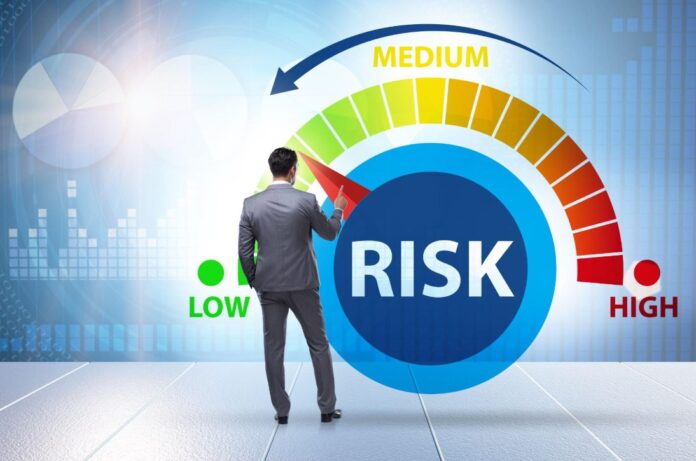Trading can feel like a wild adventure—plenty of highs, lows, and the occasional gut-wrenching thrill. As a young investor, you probably already know that some risks come with the territory. But let’s break it down to make it a bit easier to digest.
This isn’t about fancy jargon or hardcore finance lingo; it’s about getting real with the realities of trading. And, yes, there’s a lot to gain, but you also need to know how to dodge the pitfalls.
So, how do you keep those investments on the right track? Let’s get into the essentials.
Key Points
- Not every risk is worth taking—balance them with realistic expectations.
- Know the types of risks in every trade—nothing is as simple as it sounds.
- Timing matters, especially if you’re balancing work and trades.
- Stop loss isn’t a suggestion; it’s a strategy you need.
- Risk management is non-negotiable for long-term success.
Trading and Risks – What to Expect from the Market

Let’s be honest ─ no matter how cool or calm you think you are, trading can mess with your nerves. Risks in trading aren’t just a minor detail; they’re the main act. So if you’re juggling trades with a day job, like so many young investors, it’s all about knowing when to jump in and when to step back.
Now, some apps like Binomo make the process smoother and offer user-friendly tools, but the decisions? That’s all you.
Types of Risks You’ll Face as a Young Trader
Here’s a closer look at the types of risks that pop up often, and how to spot them.
1. Market Risk
Picture this ─ you’re all set to make a great return, but the market suddenly nosedives. That’s market risk—your money is always at the mercy of the market’s moves. Prices can go up or down with little warning, so keeping an eye on broader economic factors is essential.
2. Liquidity Risk
Say you want to sell off an asset quickly, but nobody’s interested. That’s liquidity risk. It’s like trying to sell a car in a remote village—people may want it but can’t pay for it immediately. When you’re in a fast-moving trading environment, liquidity issues can make or break your exit strategy.
3. Credit Risk
If you’re in the game with smaller companies or unfamiliar entities, you’re taking on credit risk. Imagine lending a friend money who says they’ll pay you back, but they forget. Credit risk works the same way in trading, where counterparty reliability isn’t always guaranteed.
4. Operational Risk
Ever deal with a tech glitch that costs you money? That’s operational risk. From app crashes to system outages, every error can impact your trade. While it’s not a thrill you want, knowing how to act quickly when things go wrong is key to staying steady.
Risk Management for Trades and Real Life

Life has enough risks on its own, right? Adding trading risks can feel like a lot. But if you’re balancing a 9-to-5, you’ll need a routine to handle both without stress. Here’s how you keep things cool, calm, and collected.
Set Limits
Don’t go wild. Establish clear boundaries for each trade and make peace with a fixed amount you’re willing to risk. This isn’t about feeling lucky; it’s about sticking to a pre-planned risk amount that lets you sleep well.
Focus on Stop-Loss Orders
A stop-loss order automatically ends a trade once it reaches a certain level. It’s like a security guard that prevents your wallet from suffering too much damage. You decide the limits, so losses stop automatically, giving you some control when things feel unpredictable.
Balancing Work with Trades
If you’re like most young investors, juggling work with trading requires timing. The market doesn’t wait for anyone, so finding moments when you’re fully focused on your trades matters. Identify times, even during market off-hours, when you can check in without rushing.
Recognizing the Pros and Cons
Here’s a simple table breaking down the benefits and risks in practical terms. Copy it into your doc for easy reference:
| Benefit | Possible Risk |
| Profit potential | Losses that impact your savings |
| Market insight gained | Market can turn on you unexpectedly |
| Flexible trading hours | Possible distractions and stress |
| Portfolio diversification | Spread too thin, causing confusion |
Practical Steps to Handle Risks Like a Pro

- Set realistic goals ─ Before you start trading, set clear goals for both short-term and long-term results. Let’s say you’re aiming to save for a big purchase. Write down your goals, and make them specific.
- Have a plan and stick to it ─ Emotional trades are risky trades. A simple but solid trading plan keeps you in check. Decide on entry and exit points before the trade, and don’t change your mind just because of a “feeling.”
- Use risk management tools ─ There are tons of apps and tools designed for trading, so use them. They help you see everything at once, without making you stare at a hundred graphs.
- Diversify your investments ─ Don’t put everything in one type of trade. Spread things out. Diversifying is a reliable way to lessen the risks and gives you more options.
- Commit to learning ─ The more you know, the fewer surprises will knock you off balance. Read up, take courses, or find credible sources. Knowledge means knowing when to act and when to wait.
FAQs
What’s the minimum investment to start trading?
Start small. You don’t need thousands, just what you’re okay with risking.
Is trading profitable for beginners?
It can be, but losses are common too. Start slow and learn as you go.
How much time does trading require daily?
It depends. An hour or two daily can work but focus on quality, not quantity.
Remember, trading is about balance—knowing what you can afford to lose, taking manageable risks, and never letting it interfere with your other goals. Stay curious and be patient.





